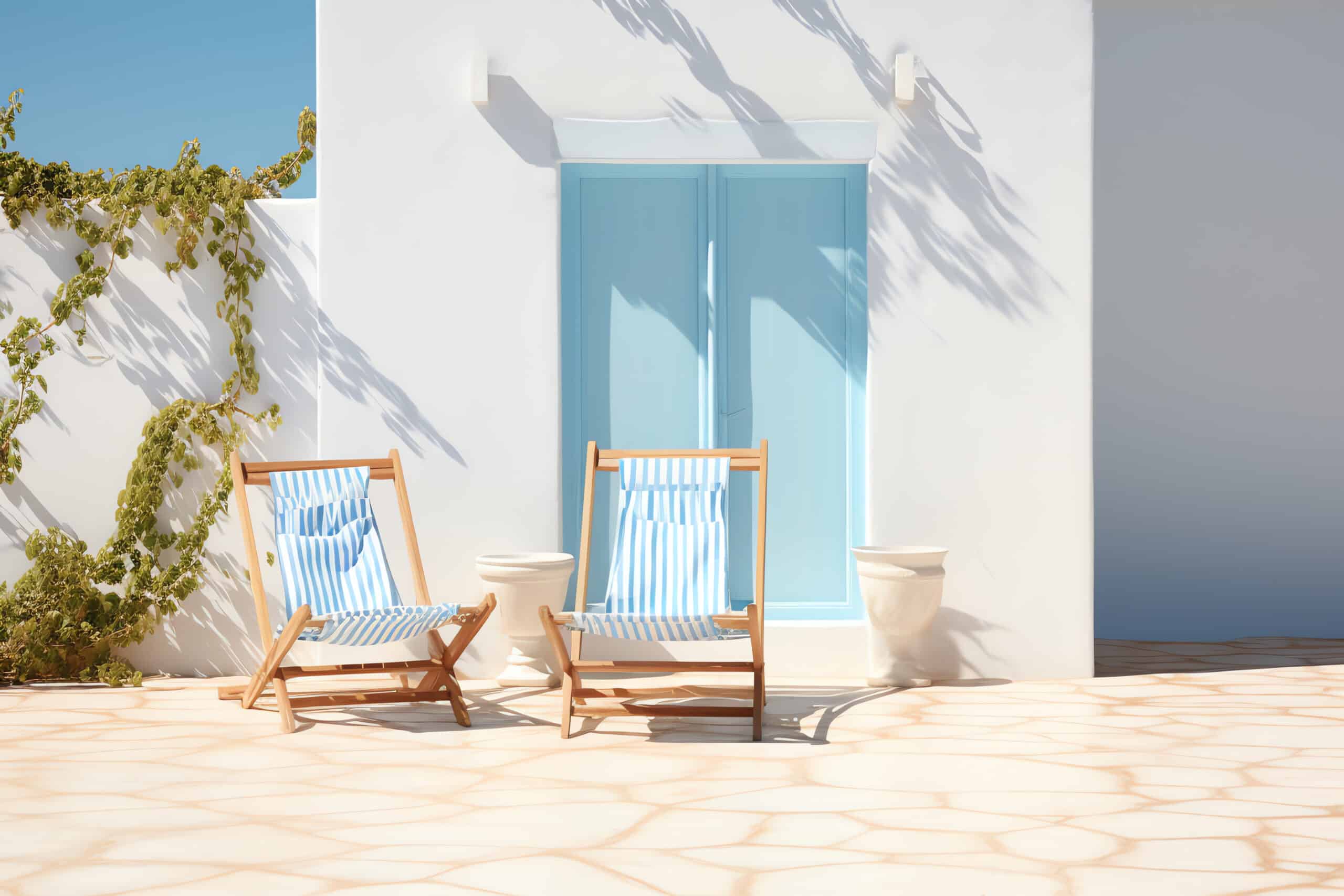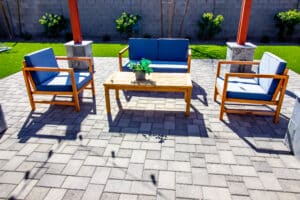How to Clean Patio Furniture
Key Takeaways
- Cleaning plastic or resin furniture:
- Wipe away debris with a dry cloth or brush
- Mix all-purpose cleaner with water and spray onto the furniture
- Use a sponge or damp cloth to wipe down surfaces
- Rinse with water and allow to air dry
- Cleaning metal furniture:
- Remove loose debris with a dry cloth or brush
- Mix mild dish soap with warm water and apply to furniture
- Scrub gently to remove dirt or grime
- Rinse thoroughly with water and dry with a clean cloth
- Cleaning wood furniture:
- Remove loose debris with a dry cloth or brush
- Mix mild oil-based soap with warm water or create a DIY cleaning solution
- Apply the solution to the furniture and scrub gently
- Rinse thoroughly with water and pat dry with a lint-free cloth
When it comes to enjoying your outdoor space, having clean and well-maintained patio furniture is essential. Whether you have plastic, metal, wood, wicker, or glass furniture, each material requires specific cleaning methods to keep it looking its best. In this article, we will explore the best practices for cleaning patio furniture based on the material it is made from.
Cleaning Plastic or Resin Furniture
Plastic or resin furniture is a popular choice for outdoor spaces due to its durability and low maintenance. To clean plastic or resin furniture, begin by wiping away any loose debris with a dry cloth or brush. Then, mix an all-purpose cleaner with water and spray it onto the furniture. Use a sponge or damp cloth to wipe down the surfaces, paying attention to any stubborn stains or dirt. Rinse the furniture with water and allow it to air dry.
Cleaning Metal Furniture
Metal furniture, such as aluminum, iron, or stainless steel, can add a sleek and modern touch to your patio. To clean metal furniture, start by removing any loose debris with a dry cloth or brush. For general cleaning, mix a quarter cup of mild dish soap with a gallon of warm water. Use a sponge or brush to apply the soapy solution to the furniture, scrubbing gently to remove any dirt or grime. Rinse thoroughly with water and dry with a clean cloth.
If your metal furniture has scuff marks or signs of oxidation, consider using a non-abrasive cleaning product or a solution of white vinegar and water to target these areas. For rust stains, you can use a wire brush or sandpaper to remove the rust, then apply a rust dissolver and primer before repainting.
Cleaning Wood Furniture
Wood furniture adds a natural and rustic charm to outdoor spaces, but it requires regular cleaning and maintenance to preserve its beauty. To clean wood furniture, begin by removing any loose debris with a dry cloth or brush. For general cleaning, mix a mild oil-based soap with warm water or create a DIY cleaning solution using ammonia, white vinegar, and warm water. Apply the solution to the furniture using a sponge or brush, scrubbing gently to lift any dirt or stains. Rinse thoroughly with water and pat dry with a lint-free cloth.
For hardwood furniture, it is recommended to sand and apply a fresh protective finish annually to maintain its appearance and protect it from the elements. Additionally, for stubborn stains, you can use powdered oxygen bleach or wood bleach according to the product’s instructions.
Cleaning Wicker Furniture
Wicker furniture adds a touch of elegance and texture to outdoor spaces, but it requires extra care when it comes to cleaning. Begin by vacuuming or using a dry paintbrush to remove any loose dirt or debris from the wicker weave. Then, mix a mild soap and water solution and scrub the furniture with a soft-bristle brush. Pay attention to the weave and use a toothbrush if necessary to clean hard-to-reach areas. Rinse the furniture with clean water and pat dry with a lint-free cloth.
Cleaning Glass Furniture
Glass furniture, such as glass tabletops, can create a sleek and stylish look in your outdoor space. To clean glass furniture, start by wiping away any loose debris with a dry cloth or brush. Then, use a glass-safe cleanser or dish detergent mixed with water to clean the surfaces. Spray the solution onto the glass and wipe it clean using a microfiber cloth or paper towel. For stubborn stains, you can spray the glass with white vinegar and wipe it clean. Remember to also clean the underside of glass tables regularly to remove any dust or dirt that may accumulate.
Additional Tips
Regardless of the material, there are some additional tips to keep in mind when cleaning patio furniture:
- Cover glass furniture when not in use to protect it from the elements.
- Avoid using abrasive cleaners on plastic furniture to prevent scratching.
- Regularly wipe down wood furniture to remove dirt, debris, and excess water.
- For hardwood furniture, consider sanding and applying a fresh protective finish annually.
- For metal furniture, apply a rust-resistant primer and paint to protect it from rust.
Conclusion
Maintaining clean and well-maintained patio furniture is important to ensure its longevity and enhance the enjoyment of your outdoor space. By following the appropriate cleaning methods for each material, such as plastic, metal, wood, wicker, or glass, you can keep your furniture looking its best throughout the seasons. Remember to regularly clean and protect your furniture to extend its lifespan and enjoy a comfortable and inviting outdoor living area.
Related Websites:
FAQs:
Q: Why is it important to regularly clean patio furniture?
Regular cleaning of patio furniture helps maintain its appearance and durability. It removes dirt, debris, and stains, preventing them from causing long-term damage. Additionally, cleaning extends the lifespan of the furniture, allowing you to enjoy it for years to come.
Q: What are the different types of patio furniture materials and their cleaning requirements?
Patio furniture can be made of wood, metal, plastic, or wicker. Each material has unique cleaning requirements to avoid damage. Wood furniture should be cleaned using mild soap and water, avoiding abrasive cleaners. Metal furniture requires removing loose dirt and using appropriate cleaning solutions based on the metal type. Plastic furniture can be cleaned with soap and water or tougher stains with vinegar or baking soda. Wicker furniture needs gentle cleaning, using a brush or vacuum cleaner to remove dirt and a mild soap solution for deeper cleaning.
Q: How should I deal with stubborn stains and mold on patio furniture?
Stubborn stains on patio furniture can be tackled with general tips such as using gentle scrubbing and natural remedies like lemon juice, vinegar, or baking soda for specific stains. Mold growth should be prevented and removed using appropriate cleaning solutions and thorough drying. Regular cleaning and maintenance can help prevent the buildup of stubborn stains and mold.
Q: How can I maintain and protect my patio furniture?
Regular maintenance is essential to prolong the lifespan of patio furniture. Using furniture covers or storing the furniture during harsh weather conditions can protect it from damage. Properly storing patio furniture during colder months, such as in a dry and covered area, can prevent exposure to extreme temperatures and moisture. These practices help maintain the appearance and functionality of the furniture.
Q: Where can I find additional resources and information on cleaning patio furniture?
For more detailed information and specific guidelines on cleaning your patio furniture, you can explore further resources such as manufacturer’s instructions, online guides, and reputable websites dedicated to outdoor furniture care. These resources can provide valuable insights and tips to help you clean your specific patio furniture effectively.






